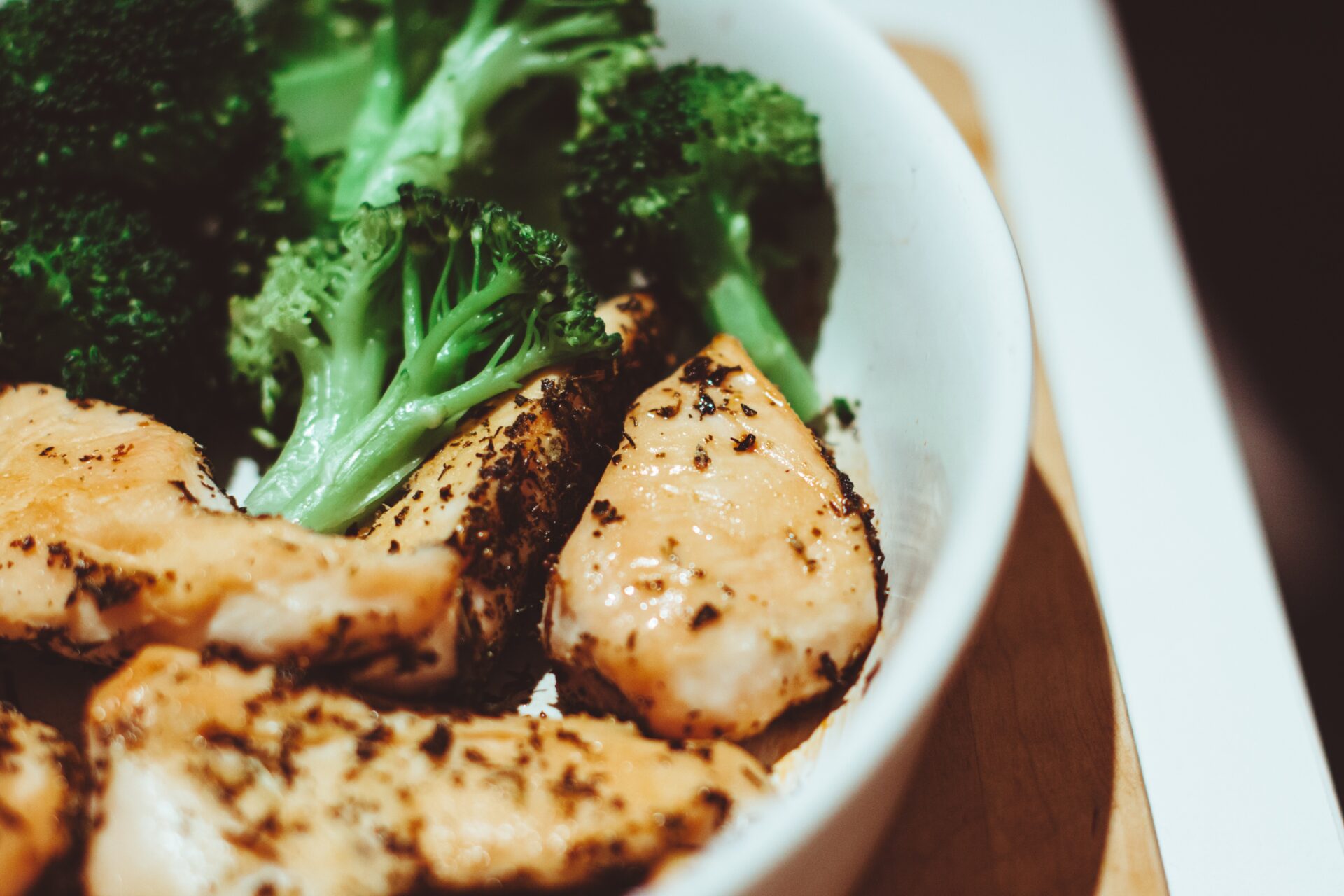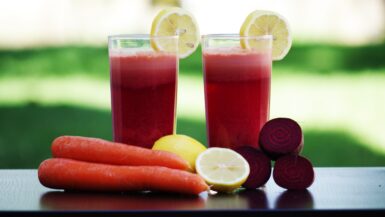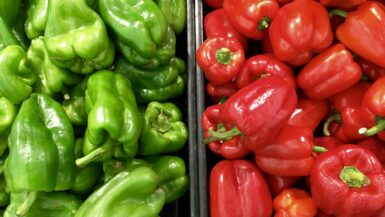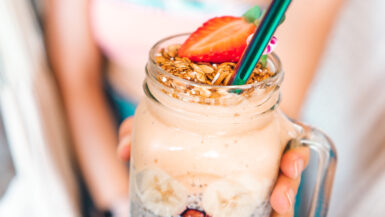A low-sodium diet refers to a dietary approach that limits the amount of salt in one’s diet. The average American consumes more than twice the recommended daily intake of sodium, which can lead to high blood pressure, heart disease, and stroke. However, by reducing sodium intake, individuals can experience a range of health benefits. In this article, we will explore the benefits of eating a low-sodium diet and provide practical tips for reducing salt intake in your daily meals.
Understanding the Importance of Sodium in Our Diet
Sodium is an essential mineral that plays a crucial role in maintaining the balance of fluids in our body. It also helps in transmitting nerve impulses and regulating muscle function. However, consuming too much sodium can lead to adverse health effects, including high blood pressure, heart disease, and stroke.
The recommended daily intake of sodium for adults is no more than 2,300 milligrams per day. However, studies have shown that the average American consumes around 3,400 milligrams of sodium per day, which is significantly higher than the recommended amount.
Sodium is naturally present in many foods, including vegetables, fruits, and dairy products. However, it is also added to processed and packaged foods, such as canned soups, sauces, and snacks, to enhance their flavor and extend their shelf life.
It’s important to understand the role of sodium in our diet and the effects of consuming too much of it. By making conscious choices about the foods we eat, we can maintain a healthy sodium intake and reduce the risk of health problems associated with high sodium consumption.
The Risks of Consuming Too Much Sodium
Consuming too much sodium can lead to various health risks, including high blood pressure, heart disease, stroke, and kidney disease. High sodium intake can cause the body to retain excess water, resulting in swelling and bloating. Over time, this can put a strain on the heart and blood vessels, leading to cardiovascular problems.
Studies have shown that reducing sodium intake can significantly lower blood pressure, especially in people with hypertension. High blood pressure is a major risk factor for heart disease, stroke, and kidney disease. By reducing sodium intake, individuals can lower their risk of developing these health problems.
Furthermore, excess sodium intake can also have a negative impact on kidney function. The kidneys play a vital role in regulating the body’s sodium balance. When sodium intake is high, the kidneys have to work harder to eliminate the excess sodium from the body. Over time, this can lead to kidney damage and disease.
It’s important to be aware of the risks associated with consuming too much sodium and take steps to reduce sodium intake in our diet. By making small changes to our eating habits, we can lower our risk of developing these health problems and improve our overall well-being.
How a Low-Sodium Diet Can Improve Heart Health
A low-sodium diet can significantly improve heart health by reducing the risk of developing heart disease and stroke. High sodium intake can cause the body to retain excess fluid, which can increase blood volume and put a strain on the heart and blood vessels. This can lead to high blood pressure and other cardiovascular problems.
A low-sodium diet can help lower blood pressure by reducing the amount of sodium in the bloodstream. Studies have shown that reducing sodium intake can lower blood pressure in people with hypertension by up to 8 mmHg. This can significantly reduce the risk of developing heart disease and stroke.
Furthermore, a low-sodium diet can also improve the function of the endothelium, which is the inner lining of blood vessels. High sodium intake can damage the endothelium, leading to inflammation and narrowing of the blood vessels. This can increase the risk of developing atherosclerosis, a condition where plaque builds up in the arteries and restricts blood flow. By reducing sodium intake, individuals can improve endothelial function and reduce the risk of developing atherosclerosis.
In summary, a low-sodium diet can significantly improve heart health by reducing blood pressure, improving endothelial function, and lowering the risk of developing heart disease and stroke. By making conscious choices about the foods we eat, we can maintain a healthy sodium intake and improve our overall well-being.
The Impact of a Low-Sodium Diet on Blood Pressure
High sodium intake is one of the leading causes of high blood pressure, which is a major risk factor for heart disease, stroke, and kidney disease. A low-sodium diet can significantly reduce blood pressure and lower the risk of developing these health problems.
The kidneys play a crucial role in regulating the body’s sodium balance. When sodium intake is high, the kidneys have to work harder to eliminate the excess sodium from the body. Over time, this can lead to kidney damage and disease, as well as an increased risk of developing high blood pressure.
A low-sodium diet can help lower blood pressure by reducing the amount of sodium in the bloodstream. The recommended daily intake of sodium for adults is no more than 2,300 milligrams per day. However, studies have shown that reducing sodium intake to 1,500 milligrams per day can lower blood pressure even further, especially in people with hypertension.
In addition to reducing sodium intake, increasing potassium intake can also help lower blood pressure. Potassium is an essential mineral that helps regulate blood pressure by counteracting the effects of sodium in the body. Foods that are high in potassium include fruits, vegetables, and dairy products.
In conclusion, a low-sodium diet can significantly reduce blood pressure and lower the risk of developing heart disease, stroke, and kidney disease. By making conscious choices about the foods we eat and increasing potassium intake, we can maintain a healthy blood pressure and improve our overall well-being.
The Benefits of a Low-Sodium Diet for Kidney Health
The kidneys play a vital role in regulating the body’s sodium balance. When sodium intake is high, the kidneys have to work harder to eliminate excess sodium from the body. Over time, this can lead to kidney damage and disease. A low-sodium diet can help reduce the workload on the kidneys and improve kidney function.
Studies have shown that a low-sodium diet can slow the progression of kidney disease and reduce the risk of developing kidney problems. It can also lower the risk of developing high blood pressure, which is a major risk factor for kidney disease.
Furthermore, a low-sodium diet can also help prevent kidney stones, which are solid mineral deposits that form in the kidneys. High sodium intake can increase the risk of developing kidney stones by increasing the amount of calcium in the urine. By reducing sodium intake, individuals can lower the amount of calcium in the urine and reduce the risk of developing kidney stones.
It’s important to note that individuals with kidney disease or other kidney problems should consult with their healthcare provider before making significant changes to their diet, including reducing sodium intake.
In summary, a low-sodium diet can improve kidney function, slow the progression of kidney disease, and reduce the risk of developing kidney stones. By making conscious choices about the foods we eat, we can maintain a healthy sodium intake and improve our overall kidney health.
Tips for Reducing Sodium Intake in Your Diet
Reducing sodium intake in your diet can be challenging, especially if you’re used to eating processed and packaged foods. However, making small changes to your eating habits can significantly reduce your sodium intake and improve your overall health.
Here are some tips for reducing sodium intake in your diet:
1. Read Food Labels
Reading food labels can help you identify foods that are high in sodium. Look for foods that have less than 140 milligrams of sodium per serving or opt for low-sodium or no-salt-added versions of your favorite foods.
2. Choose Fresh Foods
Fresh foods, such as fruits, vegetables, and lean proteins, are naturally low in sodium. Incorporating more fresh foods into your diet can help reduce your overall sodium intake.
3. Use Herbs and Spices
Using herbs and spices to flavor your food instead of salt can significantly reduce your sodium intake. Experiment with different herbs and spices to find new and interesting flavor combinations.
4. Avoid Processed and Packaged Foods
Processed and packaged foods are often high in sodium. Try to limit your intake of these foods and opt for fresh or homemade versions instead.
5. Rinse Canned Foods
Rinsing canned foods, such as beans and vegetables, can help reduce their sodium content by up to 40%. Be sure to rinse them thoroughly with water before using.
Incorporating these tips into your daily routine can help you reduce your sodium intake and improve your overall health. Remember, small changes can make a big difference!
Foods to Avoid When Following a Low-Sodium Diet
When following a low-sodium diet, it’s important to be aware of the foods that are high in sodium and limit their intake. Here are some foods to avoid or limit when following a low-sodium diet:
1. Processed and Packaged Foods
Processed and packaged foods, such as canned soups, sauces, and snacks, are often high in sodium. These foods are also often high in preservatives and additives, which can have negative health effects.
2. Fast Food and Restaurant Meals
Fast food and restaurant meals are often high in sodium. Many restaurants use high amounts of salt to enhance the flavor of their dishes. If you do eat out, try to choose dishes that are lower in sodium, or ask for the dish to be prepared without added salt.
3. Deli Meats and Cured Meats
Deli meats and cured meats, such as ham, bacon, and sausage, are often high in sodium. These foods are also often high in fat and preservatives, which can have negative health effects.
4. Cheese
Cheese is often high in sodium, especially processed cheese and cheese spreads. Try to choose lower-sodium options, such as fresh mozzarella, or limit your intake of cheese.
5. Condiments
Condiments, such as ketchup, mustard, and soy sauce, are often high in sodium. Try to choose lower-sodium options, or limit your intake of these condiments.
Incorporating these tips into your daily routine can help you reduce your sodium intake and improve your overall health. Remember, making small changes can make a big difference!
Delicious Low-Sodium Recipes to Try at Home
Following a low-sodium diet doesn’t mean you have to sacrifice flavor. In fact, reducing your sodium intake can actually enhance the natural flavors of foods and lead to more creative and healthy meal options. Here are some delicious low-sodium recipes to try at home:
1. Grilled Chicken with Mango Salsa
Ingredients:
- 4 boneless, skinless chicken breasts
- 1 mango, peeled and diced
- 1 red bell pepper, diced
- 1 small red onion, diced
- 1 jalapeño pepper, seeded and minced
- 2 tablespoons fresh lime juice
- 1 tablespoon olive oil
- 1/4 teaspoon salt
- 1/4 teaspoon black pepper
Directions:
- Preheat grill to medium-high heat.
- Season chicken breasts with salt and pepper.
- Grill chicken for 6-8 minutes per side or until cooked through.
- Meanwhile, in a medium bowl, combine mango, red bell pepper, red onion, jalapeño pepper, lime juice, olive oil, salt, and black pepper.
- Serve chicken topped with mango salsa.
2. Roasted Vegetable Quinoa Salad
Ingredients:
- 1 cup quinoa, rinsed and drained
- 2 cups low-sodium chicken or vegetable broth
- 1 red onion, sliced
- 1 red bell pepper, sliced
- 1 zucchini, sliced
- 1 yellow squash, sliced
- 2 tablespoons olive oil
- 1/4 teaspoon salt
- 1/4 teaspoon black pepper
- 1/4 cup chopped fresh parsley
- 1/4 cup crumbled feta cheese
Directions:
- Preheat oven to 400°F.
- In a medium saucepan, bring quinoa and broth to a boil. Reduce heat to low, cover, and simmer for 15-20 minutes or until quinoa is tender and liquid is absorbed.
- Meanwhile, in a large bowl, toss red onion, red bell pepper, zucchini, and yellow squash with olive oil, salt, and black pepper.
- Spread vegetables in a single layer on a baking sheet and roast for 20-25 minutes or until tender and lightly browned.
- In a large bowl, combine cooked quinoa, roasted vegetables, parsley, and feta cheese.
- Season with additional salt and black pepper to taste.
3. Baked Salmon with Lemon and Herbs
Ingredients:
- 4 salmon fillets
- 1 lemon, thinly sliced
- 2 tablespoons chopped fresh dill
- 2 tablespoons chopped fresh parsley
- 1 tablespoon olive oil
- 1/4 teaspoon salt
- 1/4 teaspoon black pepper
Directions:
- Preheat oven to 400°F.
- Arrange lemon slices in a single layer in a baking dish.
- Season salmon fillets with salt and black pepper and place on top of lemon slices.
- Sprinkle dill and parsley over salmon fillets and drizzle with olive oil.
- Bake for 12-15 minutes or until salmon is cooked through and flakes easily with a fork.
These low-sodium recipes are just a few examples of how you can enjoy flavorful and healthy meals without relying on salt. Experiment with different herbs, spices, and seasonings to find new and exciting flavor combinations.
The Role of Sodium in Processed Foods and How to Make Healthier Choices
Processed foods are a major source of sodium in the typical Western diet. Sodium is often added to processed foods as a preservative, flavor enhancer, or to improve texture. Unfortunately, many processed foods are also high in calories, unhealthy fats, and added sugars, which can contribute to weight gain, heart disease, and other health problems. Here are some tips for making healthier choices when it comes to sodium and processed foods:
1. Read food labels
One of the easiest ways to reduce your sodium intake is to read food labels and choose products that are lower in sodium. Look for products that have less than 140 mg of sodium per serving or are labeled “low-sodium” or “no-salt-added”. Be aware that some products may be labeled “reduced-sodium” but still contain a significant amount of sodium.
2. Choose fresh, whole foods
Fresh, whole foods like fruits, vegetables, whole grains, and lean proteins are naturally low in sodium and provide a host of other health benefits. Try to make these foods the basis of your diet and limit your intake of processed foods.
3. Use herbs and spices instead of salt
Herbs and spices are a great way to add flavor to your meals without adding sodium. Experiment with different herbs and spices to find new and interesting flavor combinations. Some popular options include garlic, cumin, paprika, basil, and rosemary.
4. Be wary of condiments and sauces
Condiments and sauces like ketchup, mustard, soy sauce, and barbecue sauce can be high in sodium. Look for low-sodium options or try making your own sauces and dressings at home using fresh herbs, spices, and vinegar.
5. Choose frozen fruits and vegetables
Frozen fruits and vegetables can be a convenient and healthy option, but be sure to choose products that are labeled “no-salt-added” or “low-sodium”. Avoid frozen dinners and entrees, which are often high in sodium and other unhealthy ingredients.
By making small changes to your diet and being mindful of the sodium content in the foods you eat, you can reduce your risk of heart disease, high blood pressure, and other health problems associated with a high-sodium diet.





Leave a reply